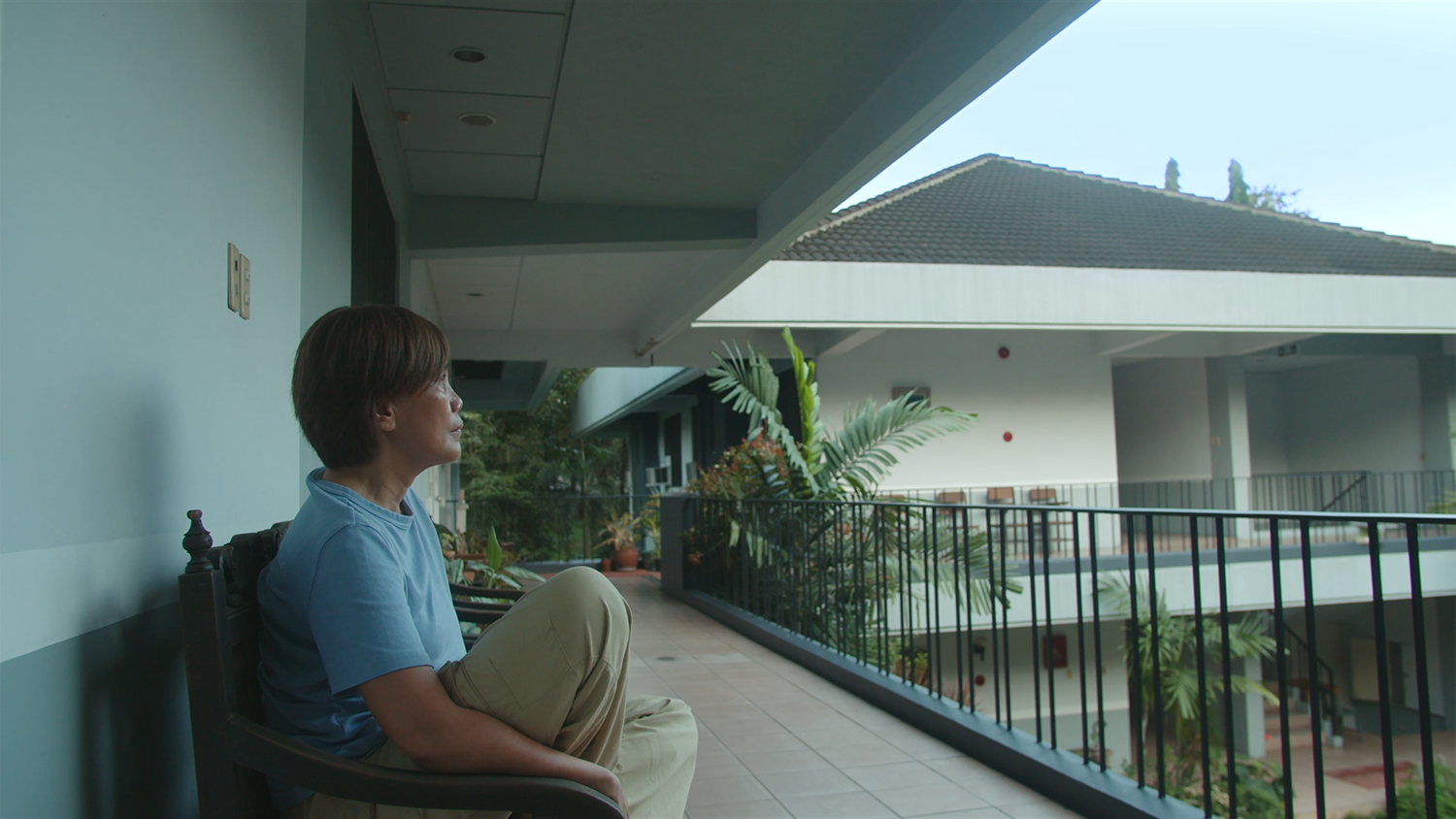‘Bloom Where You Are Planted’ REVIEW: Portrait of a Nation on Fire
‘Bloom Where You Are Planted’ REVIEW: Portrait of a Nation on Fire
Cagayan Valley Region Farmers in Bloom Where You Are Planted | Still courtesy of CInemalaya
Let’s begin with the end. After 80 minutes, when it seems the film’s all but wrapped up and the title card comes up, Bloom Where You Are Planted plays its epilogue, a montage of the September 21 protests against government flood control infrastructure projects. I can’t think of another film that uses footage from events that happened less than three weeks before its release. It is a film about the current moment, which is to say, in a tragic and paradoxical way, that it is also about decades of struggle. The footage is recent, but could easily have been from several months ago, several years, several decades. The images of today are the images of yesterday are the images of tomorrow.
The film focuses on three activists — Agnes Mesina, Amanda Echanis, and Randy Malayao — all working in the Cagayan Valley with the farmers of the region, all persecuted by the government. While events like the “Trillion Peso March” do not seem linked to the specific scope of this film, they are part of the collective struggle for justice in the face of injustice. Seeing the national anger and hunger for justice prominently featured in a film calls to mind the MTRCB reaction to last year’s Cinemalaya stand-out Alipato at Muog, which they slapped with an X rating following its exhibition during the festival, effectively banning it from public screenings. Defending the decision behind the X rating, MTRCB chairperson Lala Sotto said that “the film tends to undermine the faith and the confidence of the people in their government or duly constituted authorities.”
It is monstrously easy for the government to label activists as terrorists and to decry their actions as subversive, or to say that films voicing the true stories of state violence committed against activists undermines the faith of the people in the government, but who has really done more to undermine that faith than the very people that Filipinos elected in good faith, the senators and representatives that have been linked to corruption in DPWH flood control projects, abandoning their duties and responsibilities as elected officials, happily and remorselessly plundering the money of their constituents, selling out their communities for another watch, another car, another house, and a third airplane and a fourth helicopter because just one of each wouldn’t cut it.
In Bloom Where You Are Planted, the camera lingers on tarpaulins, posters and flyers warning people to steer clear of those who’ve been branded as terrorists, and if you think long and hard about who’s truly undermining the government, then you wouldn’t even think to name an activist who has dedicated their life to serving and representing marginalized communities, a community organizer who fights alongside the people to put their best interests ahead of the interests of monopolies and foreign interests. The film understands how ironic it is then that the person whose face is plastered on those tarpaulins, posters and flyers is Agnes Mesina, a lifelong activist and currently the Makabayan-Cagayan Valley regional coordinator.
The film juxtaposes the red-tagging of Agnes with her actual work and day-to-day life, capturing both moments of meeting with communities in the Cagayan Valley region and educating them about their rights, as well as lingering on her eating chicharron and being camera-shy. Agnes is also a mother. Intergenerational activism is a key theme of the film, exploring the pride of raising a child and seeing them grow up to do what’s right, the fear of being separated from the child because of state violence and political imprisonment, and the dream that they can create a better tomorrow. Agnes recalls one particularly poignant moment when, before returning to the province after visiting her son, he hugged her tightly, fearing it could be the last time they see each other.
Agnes Mesina in Bloom Where You Are Planted | Still courtesy of CInemalaya
Who has done more to undermine the confidence of the people in their government than ex-president Rodrigo Duterte, who incited a culture of impunity with his bloody “war on drugs” which was nothing more than a thinly veiled excuse to enable extrajudicial violence? For those who have sought justice for his crimes against humanity, the International Criminal Court (ICC) investigation and subsequent arrest of Duterte earlier this year finally felt like a step towards justice. Last week, fifteen senators voted in favor of a resolution appealing to the ICC for the interim release of Duterte from ICC detention, citing “humanitarian reasons”. Their pity for his age and health far exceeds their pity for those who suffered under his rule. They can invoke human rights laws now, but when 72-year-old activist and peasant leader Randall Echanis was red-tagged by the government then brutally murdered in his own home by state forces in 2020, they turn a blind eye.
Echanis is just one of many human rights defenders killed under the Duterte administration. His daughter, Amanda, herself a peasant leader and artist-activist, is one of the key subjects of Bloom Where You Are Planted. The introduction to Amanda in the film is another study in contrasts. We see her through a phone camera video, cradling her one-month-old infant son, speaking to camera that there is a warrant for her arrest, unjustly charging her with illegal possession of firearms and explosives, using planted evidence to frame her as an insurgent. The Anakpawis party-list immediately called for her release on humanitarian grounds. She was arrested four months after her father was murdered. As of this writing, Amanda is still detained in the Cagayan Provincial Jail. She has not been with her son in two years. Of his support for the resolution requesting the ICC to release Duterte, Senate Majority Leader Juan Miguel Zubiri says that it is not politics that motivates him but empathy as a son to a father who is old and ailing. Government leaders have all the empathy in the world for Duterte, but seemingly none for the families he tore apart.
Amanda Echanis in Bloom Where You Are Planted | Still courtesy of CInemalaya
Modern technology plays a pivotal role in the film. During tense interactions with military personnel, or the arrests of Mesina and Echanis, everyone pulls out their phone to record. The camera is a power that anyone can wield in the face of injustice because it will capture the truth at 24 frames a second. The camera unblinkingly witnesses the unjust and captures it for everyone else to see. Amanda tells her story through video calls and audio messages. When we see her, she’s mostly a screen within a screen. There is a power to seeing her defy the limits of her confinement – with only her voice and her words she delivers a poem written in jail about her parents that is genuinely heart-wrenching – but it is also a stark reminder of the life that political imprisonment takes away from people. One powerful shot sees her on a video call to watch her now five-year-old son in a school program. The camera is close to the screen, framing her as if in close-up, yet at the same time she could not be further away – a moment later mirrored when Agnes watches her son’s college graduation from a screen.
Raymund Villanueva in Bloom Where You Are Planted | Still courtesy of CInemalaya
Randy Malayao, the film’s final major subject, was a peace consultant in the peace negotiations between the National Democratic Front of the Philippines (NDFP) and the Philippine government in 2016 for, among others, socio-economic and political reform to improve the lives of “farmers, workers, urban poor, indigenous peoples, and even those in Bangsamoro areas of armed conflict.” Duterte subsequently cancelled these talks, and in 2018, Malayao was one of 650 names the Department of Justice submitted to a court to have them declared terrorists. He was killed in 2019 on his way home to the Cagayan Valley region in another suspected extrajudicial killing of a human rights defender and activist.
It is a great tragedy that he cannot speak for himself in this film, but he has his friend, journalist Raymund Villanueva, to spread his truth. We hear stories of the paralegal services he offered while politically imprisoned under the presidency of Gloria Macapagal-Arroyo. One anecdote reveals the unbelievable warmth and generosity that he extends to an inmate who attempts to kill him. The film hammers home again and again the realities of these activists. They lead their lives for others, and they are persecuted for that. I cannot imagine a more apt title for the film. Its subjects, main and minor, are antagonized, threatened with violence, jailed, yet they continue to do their work in whatever capacity they can, under whatever circumstance. They truly bloom where they are planted.
A culture of impunity still reigns under the presidency of Ferdinand Marcos Jr. Tactics of red-tagging and filing trumped-up charges against development workers, activists, leftists, and government critics have not abated. After the September 21 protests, 224 people were arrested, at least 48 of whom were minors, and as of this writing, there have been zero arrests related to the flood control project corruption. Perhaps to call the film’s ending an epilogue is a misuse of the term. The closing montage is not a final statement, because there can be no final statements in a continued struggle. Bloom Where You Are Planted is the rare film that continues long after the credits roll.
‘Bloom Where You Are Planted’ is one of the selected full-length feature films for the 21st edition of the Cinemalaya Philippine Independent Film Festival.





















